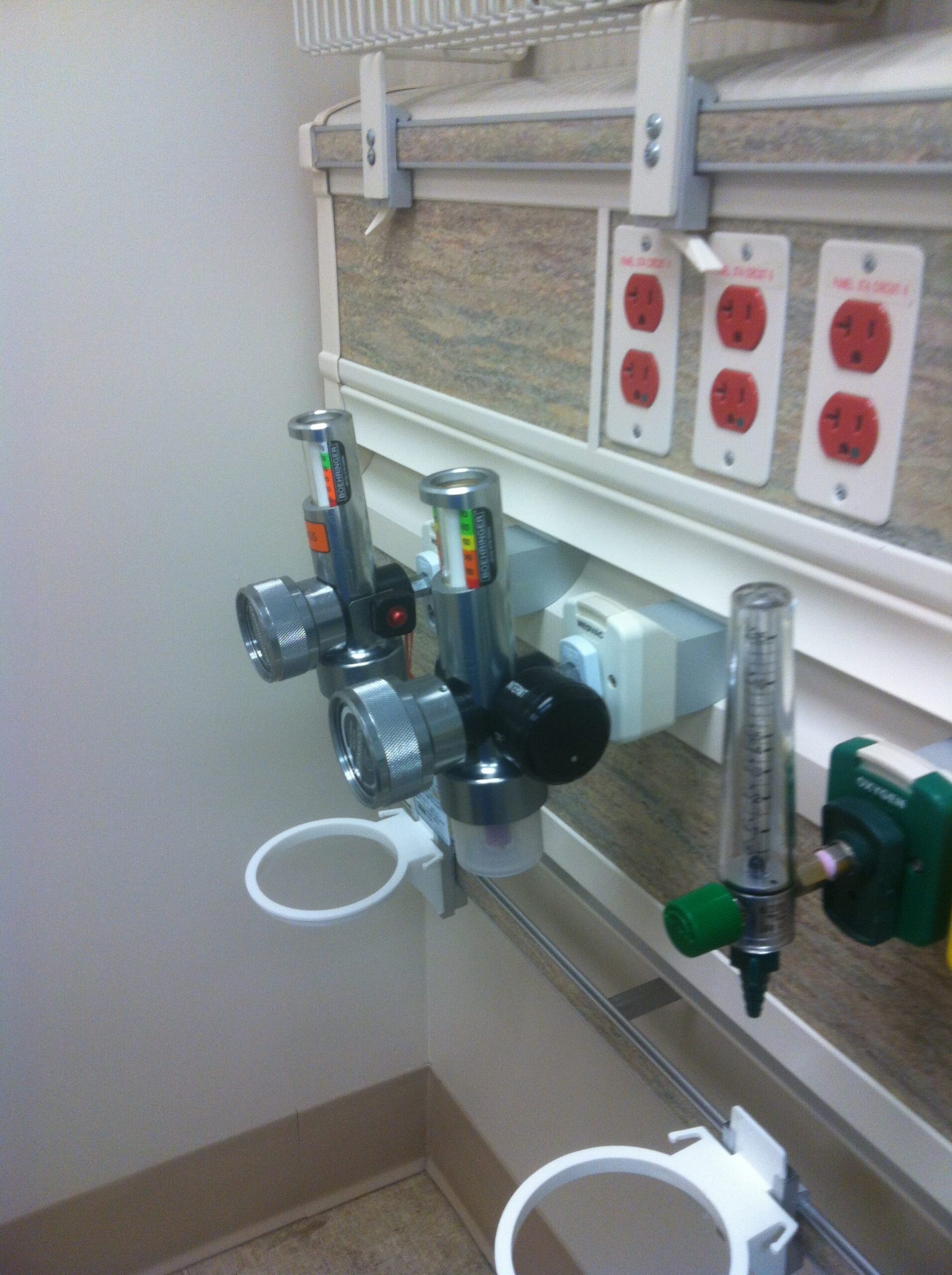As a suction regulator company, I should give you an answer like “four per bed…” and it would undoubtedly help us sell more suction regulators and save a lot of thinking. If a salesperson ever gives you a number without asking about your clinical applications, throw them out (and quickly). I have worked with nurses and respiratory therapists from coast to coast, and while there are some common themes amongst units, no two are the same. To give you a blanket answer without asking some clinical questions would genuinely be a disservice. There are six main uses for suction in an acute care hospital:
Emergency Suction – –
Let’s start from the top; how do you handle emergency suction? You will either need to have a suction regulator at every bedside or a charged portable pump on every crash cart. There is also a third way: you lock a suction regulator into the crash cart, but you may want to ensure the suction regulator is clean and disinfected before putting it next to sterile airway supplies. An ISO standard calls for portable pumps to be built with 20 liters per minute (LPM) of flow while calling for 90 LPM of flow for wall suction. If you ever want to see the difference, pour out a can of lentil soup and see which method is more effective at suctioning it up. Portable pumps also generally require a monthly test and inspection. The old EMS joke with battery-powered equipment is: “Either the last person forgot to plug it in, or it’s been plugged in so long the battery fried.” Wall suction works 24/7/365. Emergency suction is the only place to use portable suction for patient care in an acute care setting.
Yankauer / Oral Suction – –
Wall suction is not only the superior option for emergencies but also required for oral suction. Specialty items like suction toothbrushes TOOTHETTE® suction swabs use oral suction. If you have oral care as part of your VAP* / VAE** bundle, you will need to consider adding a suction regulator for this purpose.
Closed Suctioning – –
Do you have ventilated patients on your unit? You will need to consider a source of suction for your closed suction catheters, such as the BALLARD® closed suction catheter.
Nasogastric Drainage – –
Do your patients have orders for nasogastric drainage (such as post-op patients, GI Patients, or ventilated patients)? You will need to consider another dedicated suction circuit. Nasogastric drainage occurs with a single channel Levin tube or a multiple channel Salem Sump. If you utilize a single channel tube, you MUST use intermittent suction. If you use a Salem Sump, you can use either intermittent or low continuous suction. Interestingly, nasogastric drainage is the only clinical application that requires intermittent wall suction. If you use a Salem Sump and have clinical orders for low continuous suction, there is no need for intermittent suction regulators anywhere in the hospital.
Subglottic Suction – –
A new crop of endotracheal tubes created in the early 2000s gave clinicians the ability to suction the subglottic space and reduce early-onset VAP. The first clinical term for this was CASS (continuous aspiration of subglottic secretions), but the more modern catchphrase is SSD (subglottic secretion drainage). This area is outside the airway below the level where you can use oral suction, so neither the oral Yankauer nor a closed suction catheter will reach here. A dedicated suction regulator is needed to facilitate this process.
Chest Drainage – –
Pulmonary, cardiac, or trauma patients with chest drainage units require adequate suction units. Even though a modern chest drainage unit has a built-in suction regulator, it relies on regulated suction for accurate output. Never attach these to unregulated suction (stay tuned for more with another blog). Multiple chest drains in one patient will compound the lack of suction regulators. Boehringer manufactures a specialty trap bottle with two dedicated outlets which address various chest drainage units (Model #9101).
Why should we ask so many questions?
Some rooms may not need suction regulators, while some have six. I know I promised no blanket statements, but I challenge you to look at the list above and tell me how you can have an Intensive Care Unit with less than three suction regulators. I think the best way for you to determine your clinical need is to look at the various clinical interventions you do: Emergency Suction, Oral Suction, Closed Suctioning, Nasogastric Drainage, Subglottic Suction, and Chest Drainage.
*VAP = Ventilator-Associated Pneumonia
**VAE = Ventilator-Associated Event
Back to Blog


